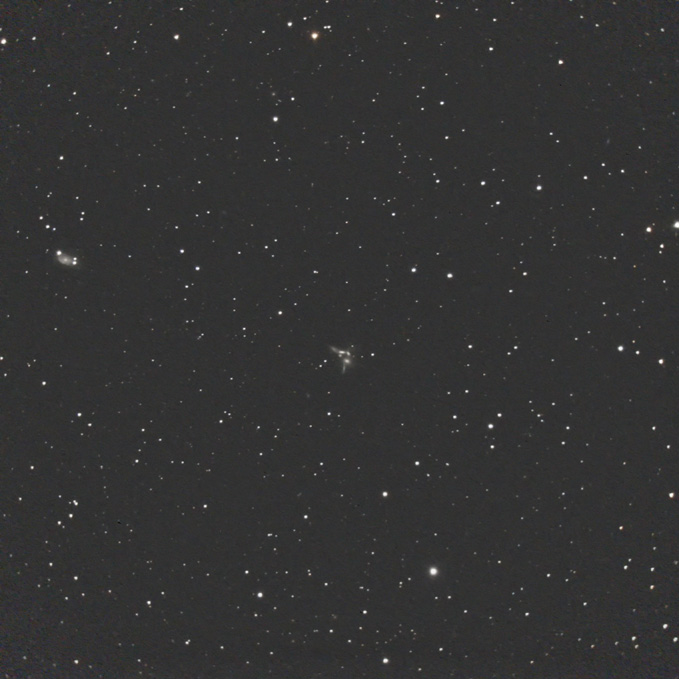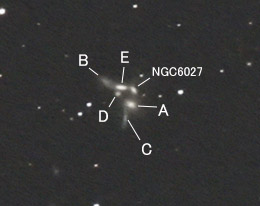
 |
| Date & Time: | May 4 2019, from 26:33 to 27:28 JST(+0900) |
| Composed 10 shots with 6 minutes exposed | |
| Optical: | Meade 25cm(10") Schmidt-Cassegrain with conversion lens (f=1600mm, F6.3) |
| with BaaderPlanetarium Moon&Skyglow filter | |
| Auto-guided with Meade LX200 Equatorial & Lacerta M-GEN | |
| Digital Camera: | Canon EOS 6D (Remodeled) |
| Location: | Ooizumi, Hokuto city, Yamanashi pref. |
| Camera Settings: | Recording Format...14bit CCD-RAW, converted to 16bit TIFF(3056×3056) |
| Device Size...20×20mm, Sensitivity...ISO4000 |
Generally we can calculate the distance to such a distant object by using of Hubble's law from its red shift that indicates regression velocity. But in case of this HCG79, actually only a members of D has 5 times large regression velocity than that of other members. It can be considered that the galaxy D is not a member of HCG79, but this fact is an example that we have doubts about universality of Hubble's law. |
 |
Members of Seyfert's Sextet |
NGC5921 |
NGC6118 |
| Copyright(c) 2019 by Naoyuki Kurita, All rights reserved. | |||
| To top page | To Deepsky in Summer index | Serpens |